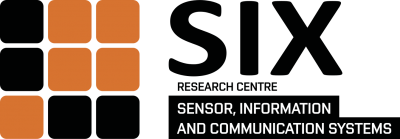The demand for transport of people and goods is continuously increasing. To make transport safer, more efficient and cleaner, various traffic telematics services are currently under development. Such intelligent transport systems (ITS) services require dependable vehicular communications (DVC) providing robust connectivity at moderate data rates. DVC includes vehicle-to-infrastructure (V2I), vehicle-tovehicle (V2V), wireless-intra-vehicle (WIV), as well as infrastructure-to-infrastructure (I2I) communication scenarios. We aim at the reliable transmission of small data packets with a hard delivery deadline. Achieving this goal will enable sensor data fusion among road users and the roadside infrastructure. Our aim is to enable cooperative ITS by DVC.
Our research activities in this area include radio propagation channel measurements and modeling and novel PHY transceiver algorithms development. We focus on WIV and V2V for on-board sensor networks, vehicle localization and tracking, as well as radio frequency and free space optical I2I communication. Dependability will be achieved by exploiting innovative diversity mechanisms in the (unreliable) propagation channel, jointly in the spatial-, polarization-, and frequency-domains, leaving out the delay-domain. Our research activities include channel analysis, new algorithms development and PHY layer design.
- Project “Development of firmware and driver for UHF sniffer mode on USRP N210″ and ” Development of Labview SW algorithms for real-time sniffer using USRP N210″ with CISC Semiconductor GmbH. The main outcome is the SW, firmware and driver for the UHF sniffer mode on USRP N210 to support the sniffer functionality and later on also for real-time sniffer on the CISC RFID Xplorer 200.
- Project “Multi-channel digitizer” with ERA Company. The main outcome is development of a new radiolocation system based on passive coherent location using highly specialized and precise digitizer and advanced DSP and data streaming functionalities implemented in FPGA.
- Project “Set of elements for photonics communication” (TH01011254) with CESNET, ISI Brno, Institute of Scientific Instruments, Miracle Group, and Network Group. The main outcome is a set of optical and electronic components, which allow operation of photonic services on fiber and FSO communication links.
- J. Blumenstein, R. Marsalek, Z. Fedra, A. Prokes, C. Mecklenbrauker, “Channel estimation method for OFDM in low SNR based on two-dimensional spreading,” Wireless Personal Communications, vol. 78, p. 1, September 2014, pp. 715 – 728.
- J. Poliak, P. Pezzei, P. Barcik, E. Leitgeb, L. Hudcova, O. Wilfert, “On the derivation of exact analytical FSO link attenuation model,” Transactions on Emerging Telecommunications Technologies, vol. 25, no. 6, 2014, pp. 609-617.
- J. Blumenstein, A. Prokes, T. Mikulasek, R. Marsalek, T. Zemen, C. Mecklenbrauker, “Measurements of Ultra Wide Band In-vehicle channel – statistical description and TOA positioning feasibility study,” EURASIP Journal on Wireless Communications and Networking, vol. 104, April 2015.
- Electronically tuned oscillators with fractal circuit elements
An electronically tunable oscillator that comprises at least one fractal element defined by the peripheral function containing constant representing the fractal order element, image of input and output circuit variables and constant which represents the circuit voltage (toto ještě upravím).
- 6 GHz vector signal generator R&S SMU 200A with real-time generation of 2×2 MIMO, 40 fading paths and 200 MHz bandwidth.
- 13.5 GHz real-time spectrum analyzer R&S FSVR13 with vector signal analysis option.
- 20 GHz four-port vector network analyzer Agilent E5071C-TDR with built-in Enhanced Time Domain Analysis option.
- AIT Austrian Institute of Technology
(Dr. Thomas Zemen). Cooperation in the field of intra-car channel measurement and modelling and localization in UWB and milimeter wave band (8 joint publications). - Graz University of Technology,
Institute of Microwave and Photonic Engineering, Austria (Univ.-Prof. Dipl. Ing. Dr. Erich Leitgeb). Cooperation in the field of free space optics channel modelling and atmospheric effects characterization (5 joint publications). - University of Cantabria,
Systems and Automation Engineering Department, Santander, Spain (Prof. José Luis Arce-Diego). Cooperation in the area of fully photonic optical communications and medical investigation (5 joint publications). - ERA a.s.
Long term cooperation domain include developing of a supporting blocks for a new radiolocation system based on passive coherent location. - TESLA a.s.
Long term cooperation is focused on radio communications and special communications equipment design. Among the last project belongs development of a dedicated aggregation algorithm and hardware for dual radio links. - CISC Semiconductor GmbH.
The aim of long term cooperation is design and realization of UHF RFID devices based on a new universal software-defined radio platform.

